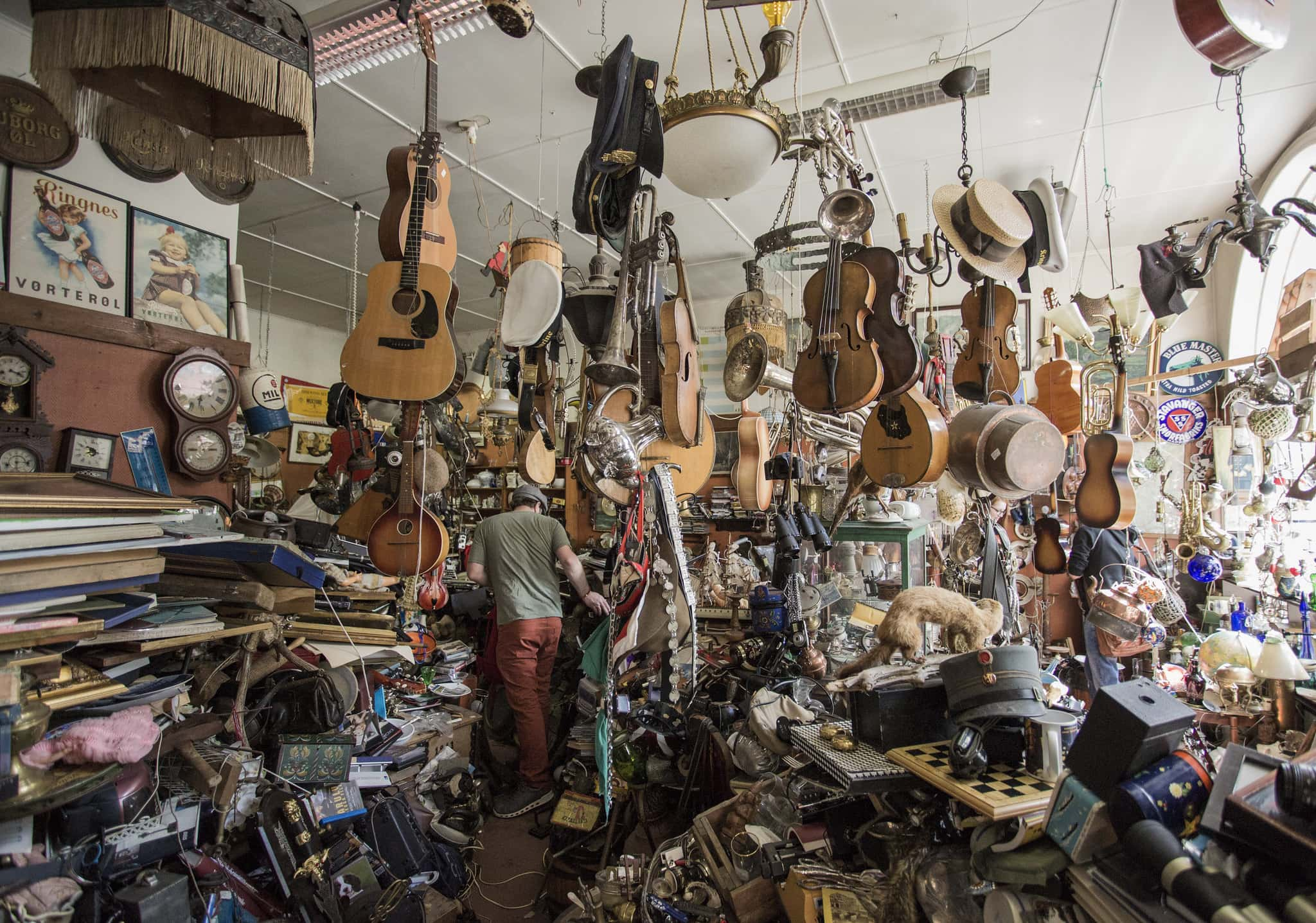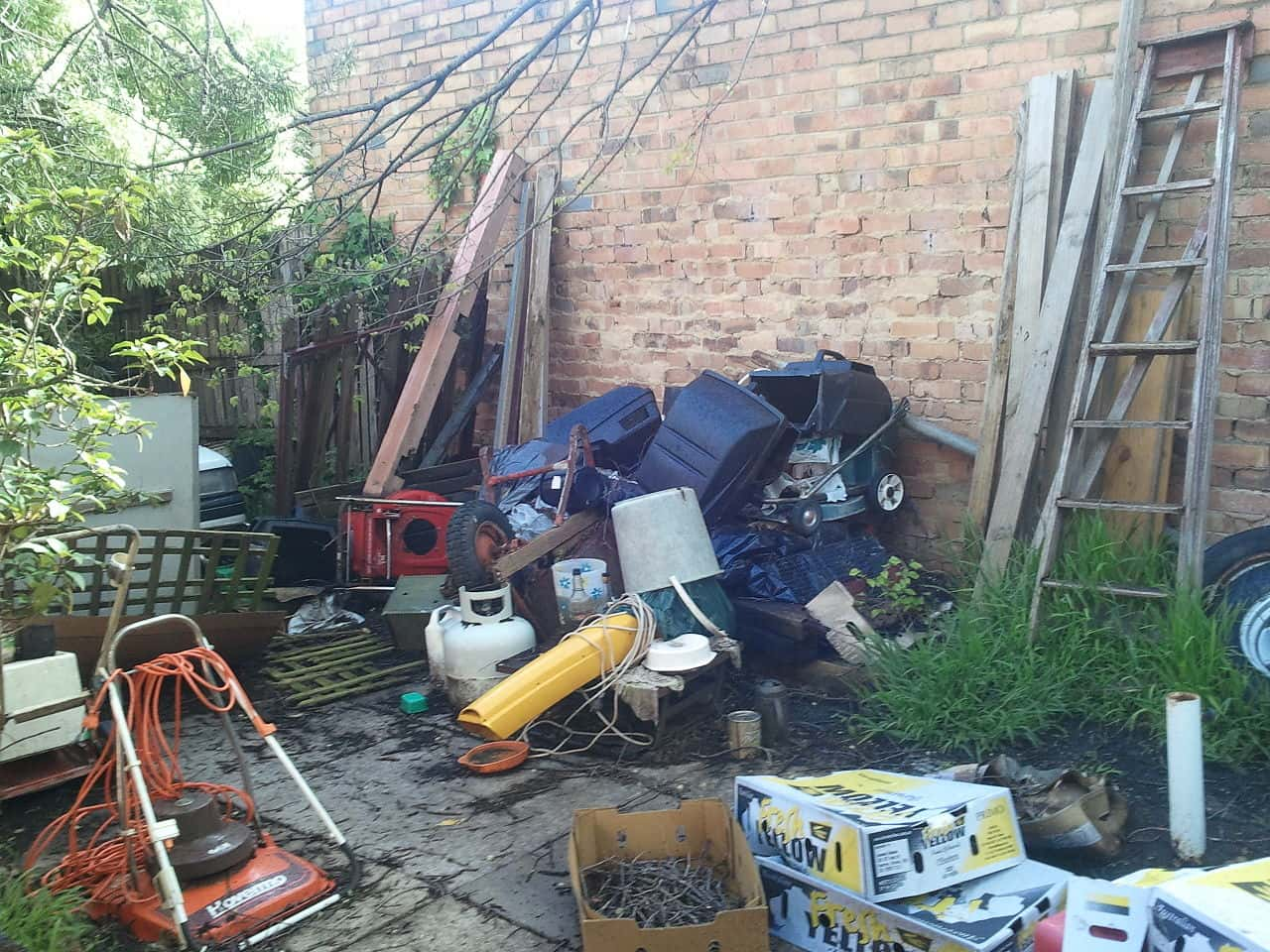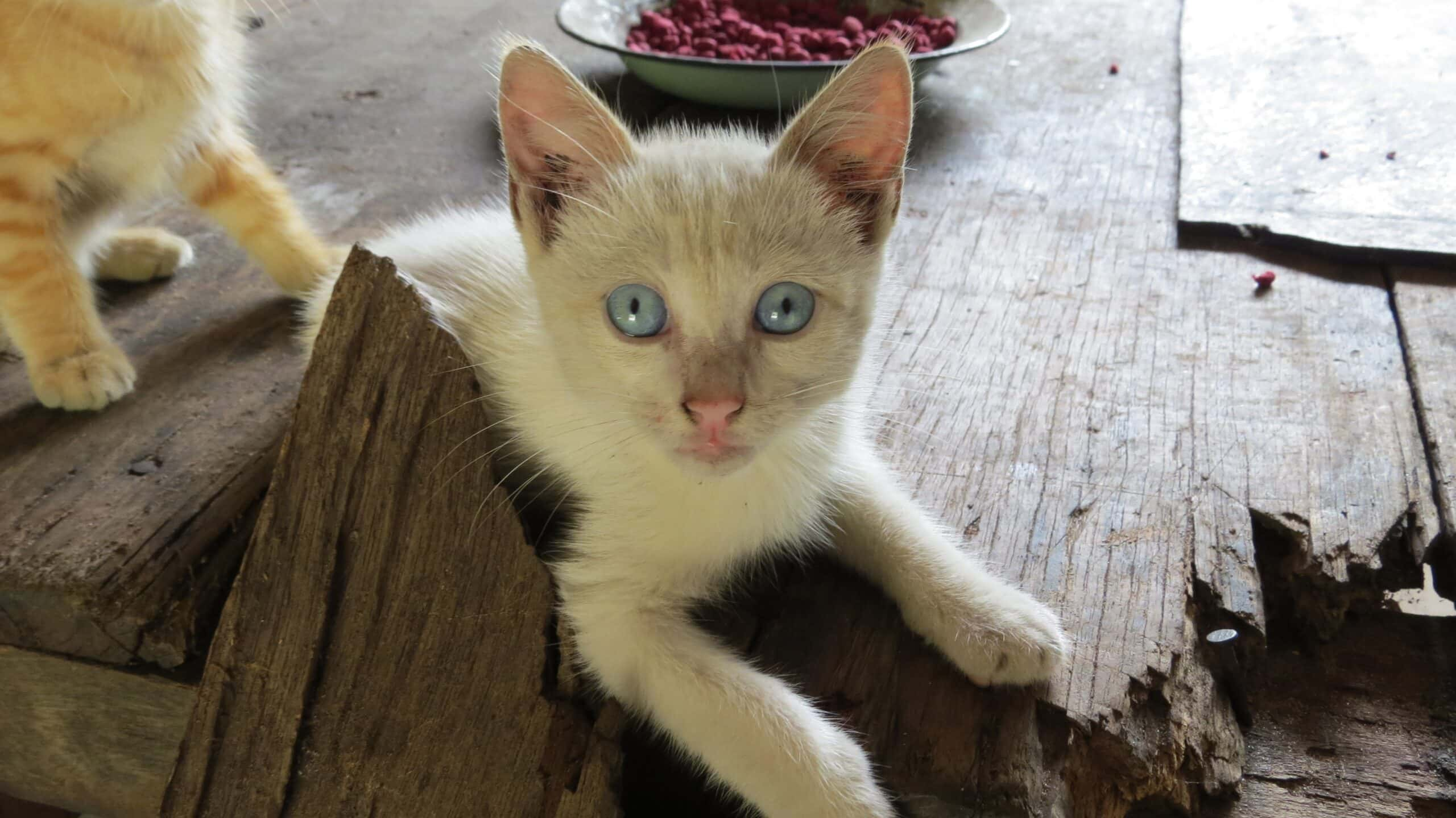Saving trash. Stockpiling junk mail. Tip-toeing around and over mountains of stuff. These are just a few of the excruciating habits hoarders are known to exhibit. It’s a lifestyle that affects a staggering amount of Americans and their families. In extreme cases, it can be an overwhelming problem to face and unravel, and it’s a growing concern around the country. Here are 41 horrifying facts about hoarders.
1. Western Consumerism
Hoarding is far more common in the United States and North America than anywhere in the world. It’s been speculated that countries that offer more comprehensive health care and engaging social programs to their citizens like Sweden and The Netherlands suffer less from this compulsion.

2. How Swedes Kick The Can
It’s not surprising that Sweden doesn’t know much about hoarding. After all, the Swedes did invent Ikea and Döstädning. That last one is also referred to as Swedish Life Simplification—the gentle art of gradually and consistently, eliminating all unnecessary items as you age. This is so that when you die, the people you’ve left behind don’t have to deal with all your junk.
3. A Bigger Problem
According to studies, compulsive hoarding—the kind where you can't use your stove because there are piles of paper and unopened envelopes collecting dust on top—affects 19 million Americans.
4. Picking Up Speed
The rate of people who suffer from the compulsion to hoard is two times the rate of people with obsessive-compulsive disorder and four times the rate of people who suffer from bipolar disorder and schizophrenia.
 Shutterstock
Shutterstock
5. Not Much Room To Live
There is a link between hoarding and obesity—hoarders are three times as likely to be overweight or obese.
6. Wires Crossed
A 2011 publication of the Journal of Abnormal Psychology explains that there’s a genetic variation in a gene sequence that substitutes valine for methionine, causing the brain disorder responsible for hoarding and overeating in both humans and animals.
7. A Thrifty Gene
This gene variant is actually a residual survival mechanism which allows anyone to be able to hold onto to valuable resources in times of need. However, when there isn’t an issue with scarcity and things are pretty readily available (thank you Amazon), this gene can have horrific hoarding repercussions.
8. Hi, My Name Is…
For anyone who feels like they may have hoarding tendencies or know someone who does, there is a group called Clutterers Anonymous (CLA) and they have a 12-step program to help declutter and destress.
9. A Dose Of Reality
In Massachusetts alone, 38% of hoarding cases were deemed “filthy environments” unfit for anyone to live in, with 45% of the homes having blocked access to the fridge; 42% of homes with blocked access to the sink; 42% of homes with blocked access to the bathtub and 10% of homes with blocked access to the toilet.

History's most fascinating stories and darkest secrets, delivered to your inbox daily.
10. Healthiness Starts At Home
People who live in very cluttered, dysfunctional homes are 77% more likely to be overweight or obese. However, clearing out clutter can reduce stress levels which therefore reduces the desire to binge eat and creates a better environment to be mobile and prepare healthy food at home.
11. Old Habits Die Hard
Hoarding runs in families. If someone grows up with a hoarder, there’s a big chance they can become one too – 50% of hoarders have someone in their family who is a hoarder.
12. According To Science
Brain scans of hoarders reveal that they have very VERY low activity in their anterior cingulate cortex—the area that governs thinking and emotion. However, this area becomes hyperactive and lights up fiercely when these people are shown images of their belongings being discarded.
13. Big Fire Hazard
Although a lot can go wrong in the house of a hoarder, like shelves toppling over or literally being buried alive under piles of stuff, by far the most serious concern is the potential for fire. A study in 2009 in Australia discovered that hoarding-related fires ranked among the deadliest of all blazes. There were 48 fires that were responsible for 10 fatalities over a 10-year period.
 Zastolskiy Victor, Shutterstock
Zastolskiy Victor, Shutterstock
14. Holding On To Everything
The most common things to hoard include clothing and books, however the piles and piles of items that hoarders tend to hold on to, that others typically throw out, are typically junk mail, leftover packaging and wrappers from food, and shampoo bottles.
15. Total Attachment
Contrary to the belief that hoarding can be about collecting or saving items, it’s actually more about the fear that comes with the throwing away of the items. It’s this trigger that causes the anxiety that then causes the hoarder to hang onto the items to prevent a breakdown or episode.
16. No Decision
For fear of making the wrong decision that would require a hoarder to throw something out, they keep everything. At the bottom of it all, many hoarders are perfectionists. Many children of hoarders confirm that their parents display characteristics of perfectionism. The logic is that if they can’t do it perfectly, they won’t do it all.
17. Ignorance Is Bliss
Compulsive hoarders rarely, if ever, recognize they have a problem. It’s usually always a friend or family member that recognizes their affliction.
18. Seeking Help
Cognitive Behavioral Therapy may be more effective at addressing hoarding tendencies than anti-depressant medication. Techniques like motivational interviewing, categorizing, organizing, exposure therapy and non-acquisition practice have been shown to effectively help with hoarding patterns.
19. A Hoard Of Dolls
Two seniors from Herefordshire, UK, named Bob and Lizzie Gibbons have 240 love dolls. They spent $160,000 putting together this love doll squad. A tad excessive? They are, after all, life-sized and take up lots of space…
20. It’s Not About Monetary Value
Many hoarders have obsessive-compulsive disorder, usually showing the early signs during adolescence, with it only becoming stronger and more apparent into adulthood. It becomes an issue for the elderly later in life because they want to hold on to their memories, with everyday objects taking on more significance and sentimentality. Things become the physical manifestation of what once mattered in their lives from their youth.
21. A Specialized Unit
Hoarding has become so bad in certain parts of the United States that there’s a specialized unit dealing specifically with hoarding. In Orem, Utah, The Neighborhood Preservation Unit exists solely to enforce the decade-long city ordinance that prohibits the accumulation of junk “visible from a public street, alley or adjoining property". They cannot go inside anyone’s home, but they have been to places where they were able to walk up and smell the inside, from the outside. The unit is made up of two law enforcement officers and a sergeant, aiming to maintain a clean neighborhood and satisfied residents.The unit consists of two law enforcement officers and a sergeant, with their main objective being to maintain neighborhood cleanliness and keep the residents joyful.
22. Buried Alive
According to Sergeant Martinez of Orem’s Neighborhood Preservation Unit, the most extreme example of hoarding was a case where a man's wife was no longer living, but he didn't know immediately because he couldn't physically locate her amongst their belongings.
23. Hoards Of Animals
It’s one thing for a person to become a hoarder and another thing for them to involve animals. Some hoarders maintain large numbers of animals without providing them appropriate care - 45% of these American households have substantial amounts of urine or waste material in their living spaces.
24. What They’re Known For
Perhaps people with mild hoarding tendencies can learn from the Japanese. The Life-Changing Magic of Tidying Up: The Japanese Art of Decluttering and Organizing is a best-selling book by Marie Kondo suggests two radical approaches. “One, put your hands on everything you own, if it sparks joy, keep it, if it doesn’t, thank it for its services then toss it. Two, only your most visible, accessible, and most joy-giving belongings remain. Place them where they are visible, accessible and easy to grab and put back".
25. What To Look For
Key common traits amongst hoarders include impulsiveness, vulnerability, neuroticism, anxiety, depression, perfectionism, indecisiveness and self-consciousness, among others.
26. Northern Hoarders
In Canada, there are no definite statistics on hoarding yet, but the estimation is that it affects between 3% and 6% of the population.
27. Not Just Humans
There are some birds like crows, ravens and chickadees that exhibit hoarding-like behavior. They have been seen hoarding non-food items in the same way they store food, suggesting that birds can develop abnormal hoarding behavior that resembles human compulsive habits.
28. Rat Packers
Hoarding behavior is also visible in rodents, including rats, mice and gerbils. It appears to be pathological because they hide shiny, inedible food. This behavior becomes more prevalent when they have been exposed to fear-provoking situations, or when they were deprived of food as babies. This senseless “storing” could be a way to make them feel more emotionally secure.
29. Opening Up
We typically see more female hoarders on shows like A&E’s Hoarders and TLC’s Hoarding: Buried Alive. However, all genders are prone to hoarding—it just may be that women are more likely to openly discuss it.
30. Everyone’s Problem
Both men and women are equal parts hoarders. However, some women tend to buy impulsively while men are more inclined to obtain free things compared to women (70% men, 57% women), and are also more likely to illicitly appropriate them (16% men, 8% women).
31. Reality Check
Reality shows that aim to “help” hoarders might actually do more harm than good. A report from the British Psychological Society concluded that using mental health problems to entertain and shock the public should desist. “The shows promote the idea that arriving at a house with a cleaning crew and pressuring people to discard possessions is the way to solve the problem".
32. Extra Help Required
In reality, people with hoarding behavior and OCD require long-term cognitive therapy. They need to change their attachment to a possession. If the hoarding isn’t dealt with at the root, simply throwing out all possessions isn’t enough to fix the real problem, and the house will eventually become full again
33. Neglect Is The Most Severe Form Of Mistreatment
It is estimated that hoarding causes over 250,000 animals in the United States to suffer and lose their lives each year. It's not unusual for either social workers or law enforcement officers to arrive at a home and discover numerous shriveled up animal carcasses.
34. Same Same But Different
There are different kinds of hoarders who accumulate items in specific ways. Syllogomaniacs stow away trash with zero monetary or sentimental value. Bibliomaniacs collect books, magazines, newspapers, and other paper literature. Animal hoarders collect pets, and their desire to keep animals is rooted in their need to be a rescuer or caregiver. Larder hoarders stock up on way too much food that would take years to consume. Recyclers want to save the environment but are backwards in their attempts and store all of it in their living quarters.
35. No Clear Path
The barely discernable route that hoarders tend to create to navigate through their house is referred to as a “goat path” which is a “narrow aisle through mountains of stuff".
36. Gruesome But True
When it comes to animal hoarding, 76% are women. Of them, 85% are middle-aged, and 46% are older than 60. Approximately 50% live alone and 80% of the time when the hoarded animals are eventually found, they are seriously neglected or no longer alive.
37. Home Not Sweet Home
In fact, the homes of animal hoarders can get to such a point of built-up filth that cleaners must wear hazmat suits to clean up. In extreme cases, houses have been burned down and bulldozed.
38. Saving Them For A Rainy Day?
Some of the most horrific things found in the homes of hoarders as seen in the TV series Hoarders have included 100 cats, no longer living, that a woman named Terry from Hanover, Illinois, placed into her freezer with the intention of cremating them one day.
39. Oh, Rats!
Glen, a hoarder from Southern California, had three rats in the beginning—one male and two females. In 2009, they escaped their cages and found refuge in between the walls. Two years later, there are 2,500 of them in Glen’s home. After his Hoarders episode, the Humane Society removed 2,000 and the rest were adopted or given away, except for his two favorites – Commander Whitehead and Captain Brown Bottom.
 Wikimedia Commons, Sarah Fleming
Wikimedia Commons, Sarah Fleming
40. A Tragic Story
In 2010, an elderly couple were literally found buried alive in their home, which was filled to the ceiling with stuff. The 75-year-old woman had injuries that looked like rat bites. Officials say, that she may have fallen and became trapped under the trash, “and when her 76-year-old husband tried to come to her aid, he apparently became trapped as well".
41. Mummified Mom
A woman named Janet Pallone Delatorre was struggling with hoarding tendencies when her 98-year-old mother left this world in 2010. In her panic, due to the chaos in her home, Janet chose not to inform the law enforcement officers about her mother's demise. This led to her mother's body remaining in bed, slowly becoming mummified over the course of four years. It wasn't until June 2014 that the authorities finally discovered it. The gruesome discovery was made after Janet’s ex-husband gained control over the house because Janet had fallen behind on payments.
Sources: 1, 2, 3, 4, 5, 6, 7, 8, 9, 10, 11, 12, 13, 14, 15, 16, 17, 18, 19, 20, 21, 22
















































